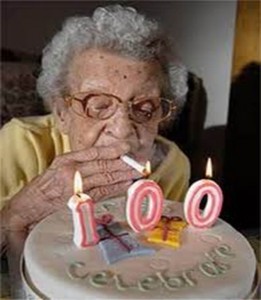 Nursing homes have not changed in many important ways since the 1920s. The physical inventory of SNF beds is still comprised of hallways with rooms on either side. (I know, I’ve been in several thousand of them!) Aides still walk back and forth, stepping into and out of patient rooms, sometimes attending to patients in common areas, while the licensed nursing staff interact with the CNA’s, look for washcloths and handle the really important stuff like med passes, charting and complaining about doctors.
Nursing homes have not changed in many important ways since the 1920s. The physical inventory of SNF beds is still comprised of hallways with rooms on either side. (I know, I’ve been in several thousand of them!) Aides still walk back and forth, stepping into and out of patient rooms, sometimes attending to patients in common areas, while the licensed nursing staff interact with the CNA’s, look for washcloths and handle the really important stuff like med passes, charting and complaining about doctors.
The time that nurses and aides once spent at bedside, listening, consoling and administering care was long ago expunged by “managed care”, payment cuts and burgeoning regulatory reporting demands. This legacy model remains in place today in most centers. It is terribly inefficient and is at the heart of why productivity in the sector is so poor. Nursing home and assisted living managers have only the vaguest idea of which staff spend how much time with any individual patient, resident or guest. The historical payment models in the SNF environment supported this inefficiency, so there has been no need to develop a cost based accounting model which would assign units of time (cost) to specific behavior (one measure of productivity). And the payment models in assisted living have been predicated upon guesswork. We think Mrs. Smith will require one hour of care per day so she will be charged $2000, while Mr. Jones will require two hours of care per day and will be charged $2750. Of course the problem is that this “pin the tail on the resident” pricing model is not based on empirical data. The largest line item expense, and the most important function in any SNF or ALR is labor, yet the local supermarket and discount hotel have better means and methods for tracking the productivity of its labor. It’s time to look at a new model for developing and deploying productivity measures, including the use of existing technologies.
Occupancy and utilization of healthcare and post acute care services in the United States has been declining since 2000. There are several reasons for this including the Great Recession and the “demographic dip” which is the reduction in live births from 1925 to 1945 in the United States. These factors conspire to reduce demand, which is evidenced in declining hospital occupancy, declining occupancy in skilled nursing as well as occupancy challenges in other seniors housing and services markets. Because the barriers to exit for healthcare providers are so high, this declining market is leading to hyper competitive behavior. Nursing centers are fighting tooth and nail over each hospital discharge, and assisted living residences are aggressively trying to “close the back door”. In the face of declining markets, benchmark studies of other industries suggest four highly interrelated strategic responses: 1. Improve loyalty (when the difficulty and cost of acquiring a new customer goes up, it’s essential to hold onto the ones you have), 2. Improve productivity (with labor consuming 65 to 75% of the operating budget, it’s critical to achieve higher productivity), 3. Innovate, which is essential in order to, 4. Differentiate.
The role of labor and systems productivity, (three dimensions –technical, productive, and allocative).By deconstructing and looking in commonsense ways at the use of labor and its participation in measurable outputs, managers will gain new perspectives on their most important line item. Significantly, this approach has marketing potential to differentiate the post acute care provider within its marketplace area through innovation. This initiative will incorporate commonly used continuous quality improvement (CQI/TQM) tools such as process mapping, root cause analysis (Fishbone) and other forms of visualizing data/information.
